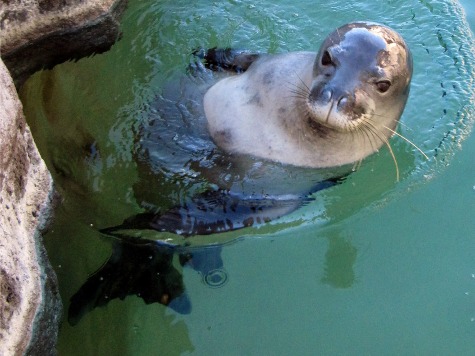The scientific journal Nature Communications has published the results of a study conducted by St. Jude Children’s Research Hospital that focused on an avian influenza virus that left harbor seals dead along the New England coast, and their findings indicate that the virus poses a threat to humans.
The H3N8 virus that killed the seals was found spreading through ferrets in separate cages by respiratory transmission, which is not the usual case with avian flu viruses, so scientists are worried that it could be transmitted through humans in an airborne manner.
Scientists are also concerned because the H3N8 virus showed similarities to the highly pathogenic avian H5N1, both showed mutations in a protein that allowed the H5N1 virus to be transmitted through respiratory droplets. Evidence also showed that the avian H3N8 seal virus infected and flourished in human lung cells and that no human immunity exists for the virus.
Corresponding author Stacey Schultz-Cherry, Ph.D., stated, “This study highlights a gain-of-function experiment that occurred in nature and shows us there are avian flu viruses out there beyond H5N1 and H7N9 that could pose a threat to humans. Avian H3N8 viruses are established in horses and dogs. This study raises a red flag about the threat this strain poses to humans exposed to animals infected with the virus.”
Avian H3N8 was responsible for a human flu pandemic in the 1880s. There has been no evidence that the 2011 version that killed the seals resulted in human illness, but there is another virus that was transmitted from seals to humans who were in close contact with them.
The study’s first author, Erik Karlsson, Ph.D., warned that surveillance of flu viruses in wild and domestic animals needs to be prioritized.
The H3N8 harbor seal virus was red-flagged by scientists when they looked at its sequencing; there were mutations in the hemagglutinin (HA) protein and a change in the PB2 gene. HA, which exists on the surface of the flu virus, helps the virus connect to cells as it infects them. The PB2 mutation has been noticed with diseases in mice. Scinetists found in 2012 that those two mutations allowed H5N1 to be transmitted among ferrets via respiratory droplets.
In the St. Jude study, two of the three animals that were exposed to H3N8 from respiratory transmission became infected with minimum symptoms. Researchers also wanted to see if humans vaccinated against seasonal flu strains were immune to the H3N8 virus; they were not. The researchers asserted, “The transmissibility of the seal H3N8 virus coupled with the apparent lack of immunity makes this strain a concern.”

COMMENTS
Please let us know if you're having issues with commenting.